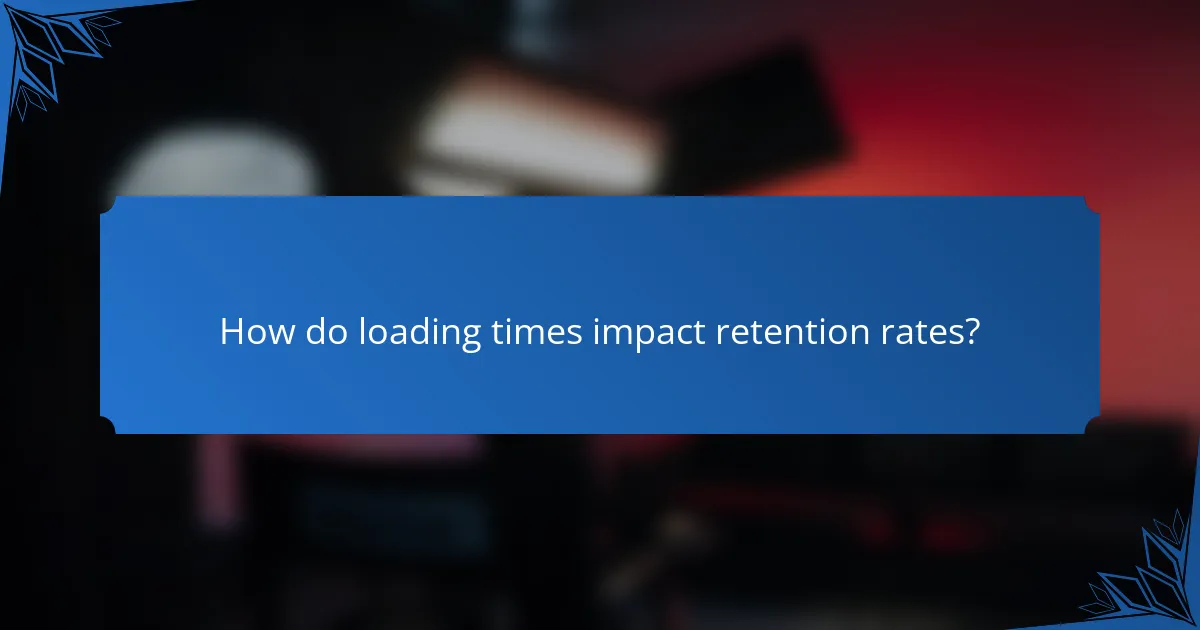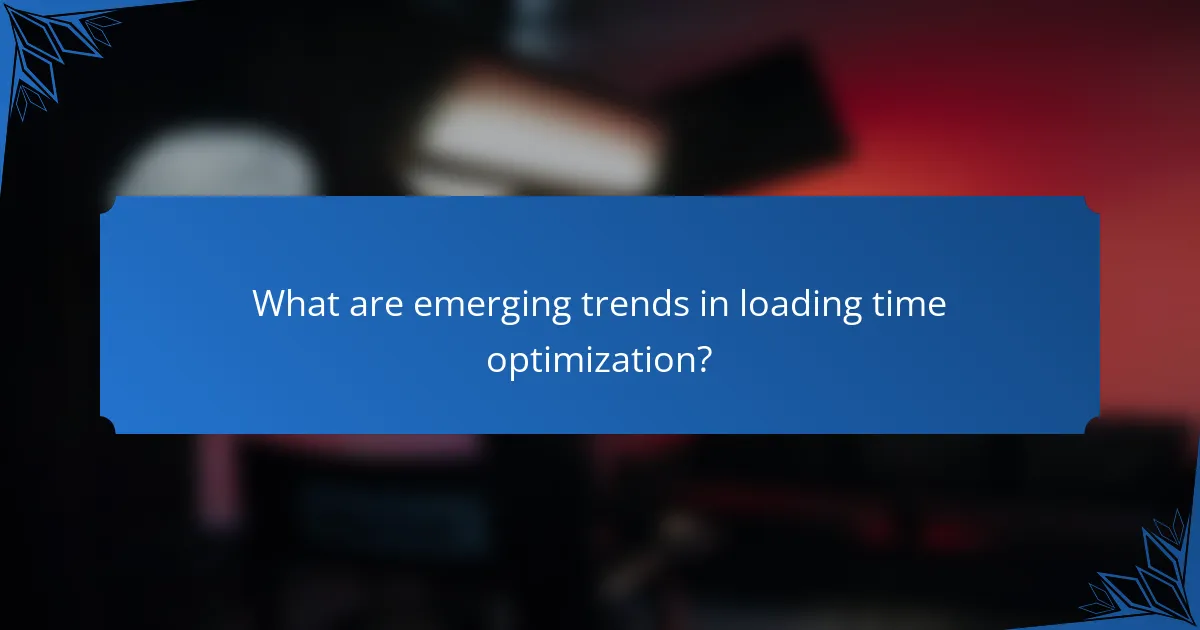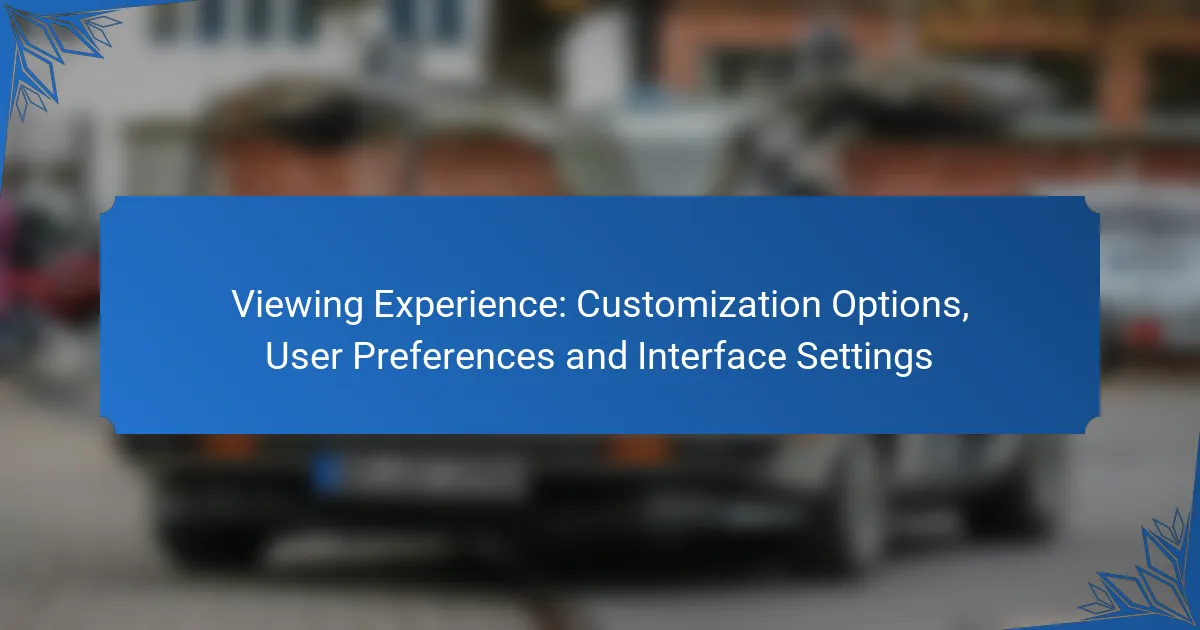Loading times play a crucial role in user satisfaction, directly affecting how quickly users can access content. Faster loading enhances user experience and retention, while delays can lead to frustration and increased bounce rates. By optimizing loading times through effective strategies, websites can significantly improve user engagement and overall satisfaction.

How do loading times affect user satisfaction?
Loading times significantly impact user satisfaction by influencing how quickly users can access content. Faster loading times lead to higher satisfaction levels, while delays can frustrate users and drive them away.
Direct correlation with user engagement
There is a strong direct correlation between loading times and user engagement. When a website loads quickly, users are more likely to explore additional pages and interact with content. Conversely, slow loading times can lead to decreased interaction and lower overall engagement metrics.
For instance, studies suggest that a loading time of under two seconds can enhance user engagement, while delays beyond three seconds can result in a noticeable drop in user activity.
Impact on bounce rates
Loading times have a significant impact on bounce rates, which measure how many users leave a site after viewing only one page. A site that takes longer than a few seconds to load can see bounce rates increase substantially, often by tens of percent.
To minimize bounce rates, aim for loading times under three seconds. Regularly testing your site’s performance can help identify and address any issues that may be causing delays.
Influence on overall experience
Overall user experience is heavily influenced by loading times, affecting perceptions of reliability and quality. Users expect fast, responsive websites, and delays can lead to frustration and dissatisfaction.
To enhance the overall experience, consider optimizing images, leveraging browser caching, and minimizing HTTP requests. These strategies can help ensure that your site loads quickly, keeping users happy and engaged.

What are the best practices for optimizing loading times?
To optimize loading times, focus on techniques that reduce file sizes and the number of requests made to the server. Implementing effective strategies can significantly enhance user satisfaction and retention.
Image compression techniques
Image compression is crucial for reducing loading times without sacrificing quality. Use formats like JPEG for photographs and PNG for graphics with transparency, and consider modern formats like WebP for better compression rates. Aim for a balance where images are under 100 KB whenever possible.
Tools such as TinyPNG or ImageOptim can help automate the compression process. Always test images on different devices to ensure they maintain visual integrity while loading quickly.
Minimizing HTTP requests
Reducing the number of HTTP requests can significantly decrease loading times. Combine CSS and JavaScript files where feasible, and use CSS sprites to consolidate multiple images into a single file. This minimizes the number of server requests needed to load a page.
Consider using a Content Delivery Network (CDN) to serve static resources, which can further reduce load times by caching content closer to users. Aim to keep the total number of requests under 50 for optimal performance.
Leveraging browser caching
Browser caching allows frequently accessed resources to be stored locally on a user’s device, reducing load times on repeat visits. Set appropriate cache-control headers to specify how long browsers should store files, typically ranging from a few days to several months.
Implementing caching strategies can significantly improve user experience, especially for returning visitors. Use tools like Google PageSpeed Insights to evaluate caching effectiveness and adjust settings accordingly.

How do loading times impact retention rates?
Loading times significantly affect user retention rates; slower websites tend to lose visitors. Research shows that even a delay of a few seconds can lead to a noticeable drop in user engagement and satisfaction.
Statistics on user retention
Studies indicate that around 40% of users abandon a website that takes more than 3 seconds to load. Furthermore, a 1-second delay in page response can result in a 7% reduction in conversions. These statistics highlight the critical relationship between loading times and user retention.
In e-commerce, faster loading times can lead to higher sales; for instance, sites that load in under 2 seconds can see conversion rates increase by up to 50%. This demonstrates how crucial speed is for retaining customers and driving revenue.
Case studies from major websites
Amazon reported that every 100 milliseconds of latency costs them 1% in sales. This stark example illustrates the direct financial impact of loading times on user retention. Companies like Walmart have also found that improving page load speed by just 1 second resulted in a 2% increase in conversions.
Another notable case is Google, which optimized its homepage to load in under half a second, significantly enhancing user experience and retention. These case studies underline the importance of prioritizing loading times to maintain user engagement and satisfaction.

What tools can help measure loading times?
Several tools can effectively measure loading times, providing insights into website performance and user experience. These tools help identify bottlenecks and suggest improvements to enhance loading speed.
Google PageSpeed Insights
Google PageSpeed Insights evaluates the performance of a webpage on both mobile and desktop devices. It provides a score from 0 to 100, with higher scores indicating better performance. The tool also offers specific recommendations for optimizing loading times, such as image compression and script minification.
When using PageSpeed Insights, focus on the “Opportunities” and “Diagnostics” sections for actionable tips. Regularly testing your site can help track improvements over time and ensure compliance with Google’s performance standards.
GTmetrix
GTmetrix combines Google Lighthouse and WebPageTest to analyze loading times and performance metrics. It generates a detailed report that includes page load details, performance scores, and recommendations for optimization. Users can view historical data to monitor changes in performance over time.
Utilize GTmetrix’s waterfall chart to visualize how different elements of your webpage load. This can help pinpoint specific areas that slow down loading times, allowing for targeted improvements.
Pingdom
Pingdom offers a user-friendly interface to test website loading times from various locations worldwide. It provides a performance grade along with detailed insights into load times for individual elements, such as images, scripts, and stylesheets. This helps identify which components may be causing delays.
Consider using Pingdom’s uptime monitoring feature to ensure your site remains accessible. Regular checks can help you respond quickly to performance issues that may affect user satisfaction and retention.

What are the consequences of slow loading times on display advertising?
Slow loading times can significantly hinder the effectiveness of display advertising by reducing user engagement and overall satisfaction. When ads take too long to load, users are likely to abandon the page, leading to missed opportunities for advertisers.
Ad viewability rates
Ad viewability rates refer to the percentage of ads that are actually seen by users. Slow loading times can drastically lower these rates, as users may leave the page before the ads fully render. Studies indicate that if an ad takes longer than a few seconds to load, viewability can drop by more than half.
To improve viewability, aim for loading times under two seconds. Implementing strategies like asynchronous loading or optimizing image sizes can help achieve this goal.
Impact on revenue generation
Revenue generation from display advertising is directly affected by loading times. Slow-loading ads can lead to lower click-through rates, which in turn reduces potential earnings for publishers. Advertisers may also be less willing to pay premium rates for placements that do not perform well due to loading delays.
To maximize revenue, consider using performance monitoring tools to track loading times and user engagement. Regular audits can help identify bottlenecks and improve ad performance, ultimately enhancing revenue potential.

How do loading times vary across different devices?
Loading times can differ significantly between devices, primarily due to hardware capabilities and software optimizations. Mobile devices often experience longer loading times compared to desktops, influenced by factors such as screen size, processing power, and network conditions.
Mobile vs desktop performance
Mobile devices typically have less processing power and memory than desktops, which can lead to slower loading times. For instance, a website might load in 3-5 seconds on a desktop but take 5-10 seconds on a mobile device, especially if it’s not optimized for mobile viewing.
To improve mobile performance, developers should prioritize responsive design and minimize heavy graphics. Implementing techniques like lazy loading can also enhance user experience by loading content only as needed.
Impact of network speed
Network speed plays a crucial role in loading times across all devices. Users on high-speed connections may experience loading times of under 2 seconds, while those on slower networks could see delays of several seconds or more.
For optimal performance, websites should be designed to adapt to varying network speeds. This can include serving lower-resolution images to mobile users or providing a simplified version of the site for those on slower connections. Regularly testing loading times under different network conditions can help identify areas for improvement.

What are emerging trends in loading time optimization?
Emerging trends in loading time optimization focus on enhancing user experience through faster loading speeds and improved performance. Techniques such as progressive web apps and lazy loading are gaining traction, providing users with seamless interactions and reducing bounce rates.
Progressive web apps
Progressive web apps (PWAs) combine the best features of web and mobile applications, offering fast loading times and offline capabilities. They utilize service workers to cache resources, enabling users to access content even without an internet connection, which significantly enhances user satisfaction.
To implement a PWA, developers should focus on optimizing the app shell, ensuring that the core functionality loads quickly. This often involves minimizing JavaScript and CSS, compressing images, and leveraging responsive design to cater to various devices. A well-optimized PWA can load in under a second on a good network, which is crucial for retaining users.
Common pitfalls include neglecting to test the PWA across different devices and browsers, which can lead to inconsistent experiences. Regularly updating the service worker and monitoring performance metrics are essential for maintaining optimal loading times and user engagement.



